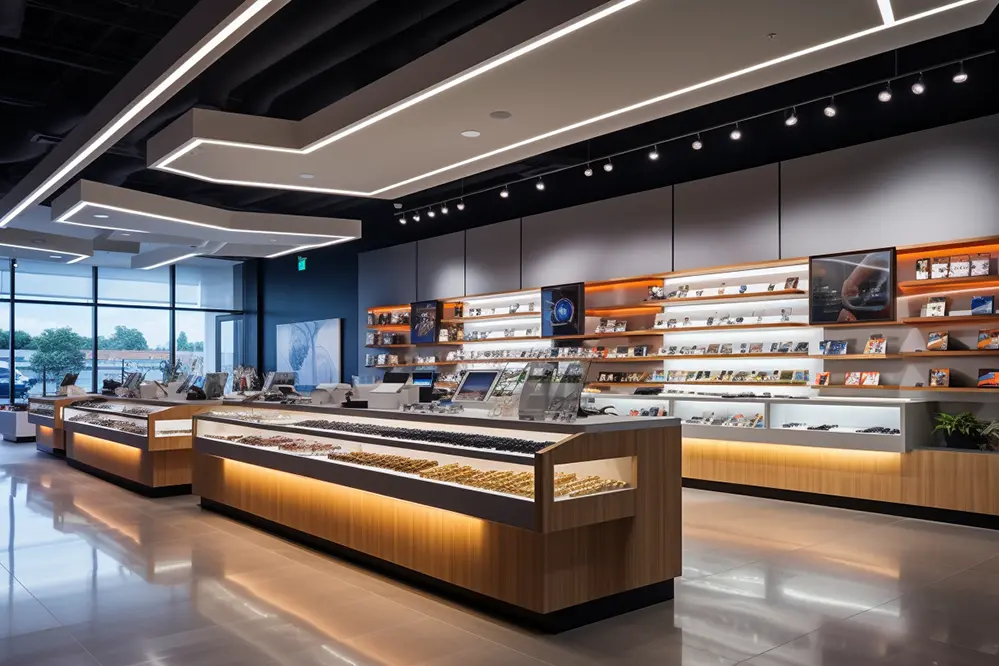In the bustling heart of retail, where every detail matters, the impacts of lighting on consumer behavior and retail sales often go unnoticed. Yet, this seemingly minor element can transform a shopping experience, influencing everything from customer mood to purchasing decisions. A well-lit store not only attracts more foot traffic but also enhances the perception of products, making them more appealing to potential buyers.
The significance of lighting in retail is backed by compelling research. Studies have shown that strategic lighting can increase sales by up to 20%, underscoring its potential as a powerful tool for retailers. Beyond aesthetics, lighting plays a crucial role in creating an inviting atmosphere, guiding customer flow, and highlighting key products. Retailers who harness the power of lighting can craft environments that resonate emotionally with consumers, encouraging them to linger and explore.
As we delve deeper into this topic, we will uncover the science behind how lighting affects retail sales and consumer behavior, explore various lighting techniques, and provide actionable insights for retailers. Join us on this enlightening journey to discover how the right lighting can elevate your retail strategy and drive success.
The Role of Lighting in Retail Environments
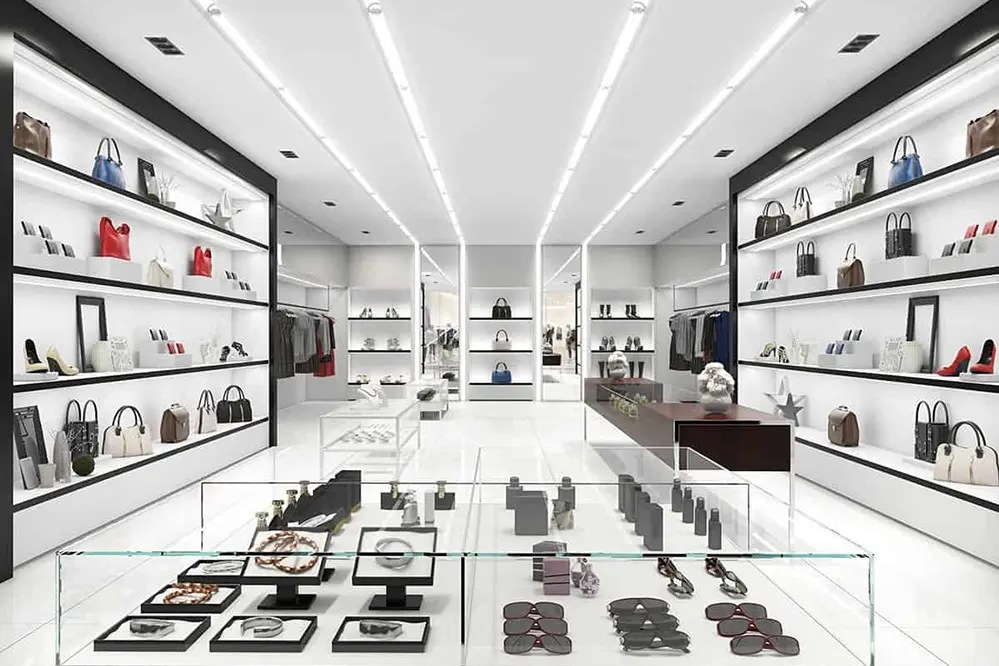
Lighting is the silent architect of the retail experience, guiding and shaping consumer interactions within a space. Upon entering a store, customers are immediately enveloped in an environment crafted by strategic light placements.
Different lighting modalities send distinct messages, influencing how products are perceived.
With carefully tuned lighting, retailers create captivating environments that contribute to a sense of luxury or affordability, aligning brand identity with consumer expectations and desires. Thoughtfully implemented, lighting can demand attention, emphasize important features, or even subtly guide the buyer’s journey through the store.
The psychological impact of lighting extends beyond visual appeal; it establishes the rhythm of a shopping experience, smoothly transitioning customers from one section to another and fostering an inviting ambiance, grounded in principles of psychology. By embracing dynamic lighting solutions, retailers can effectively create “zones” within their spaces, encouraging exploration and enhancing engagement. These elements, when harmonized, lead to a sophisticated and supportive atmosphere conducive to meaningful consumer interactions.
Psychological Impact of Lighting on Consumers
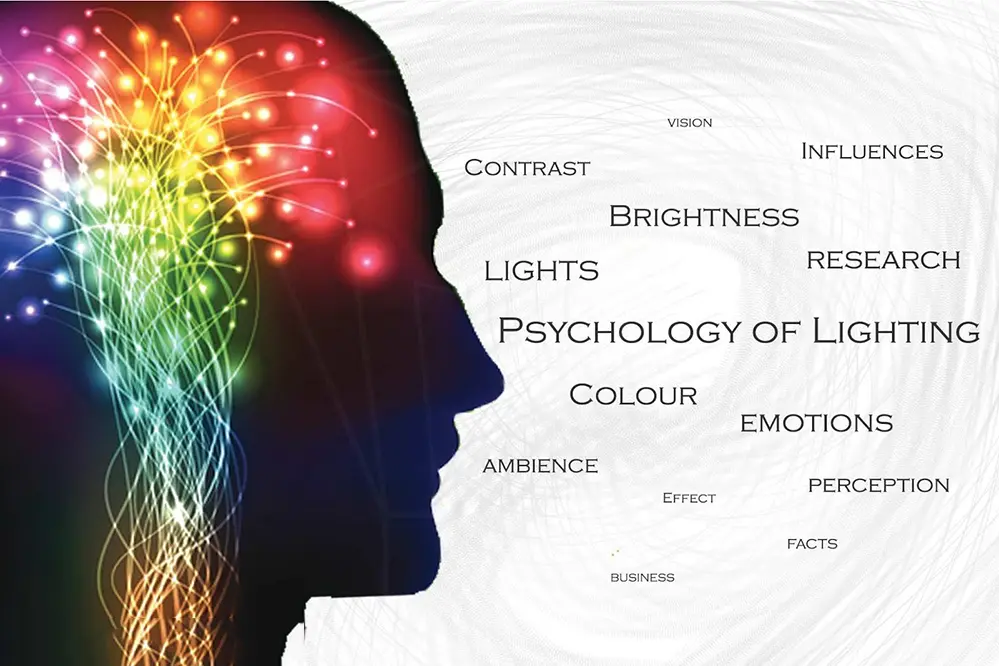
Lighting plays a pivotal role in shaping consumer perceptions, behaviors, and emotions, serving as a powerful driver in the retail environment. By influencing mood, it fosters a connective psychological experience, highlighting the psychology behind consumer interactions in retail environments.
Bright lighting tends to energize and excite shoppers, increasing the likelihood of impulse purchases. This lighting strategy is often employed in sections where engagement and quick decisions are desirable.
Conversely, softer lighting can create a calm and relaxed atmosphere, encouraging prolonged browsing. This effect is beneficial in areas where thoughtful decision-making is encouraged, such as in bookstores or home furnishings.
The strategic use of warm and cool lighting tones can subtly influence perceptions of product quality and appeal. Warmer lights may make products appear more inviting, whereas cooler lights can give an impression of sleek modernity.
Retailers who master the psychological nuances of lighting can create tailored shopping experiences that captivate and persuade. As a result, they foster a more profound connection between the consumer and the brand.
Ultimately, the art of using light effectively lies in understanding the nuanced rhythm it can dictate. Thoughtful lighting choices harness this rhythm, crafting a transformative experience for every consumer.
How Lighting Influences Shopping Habits
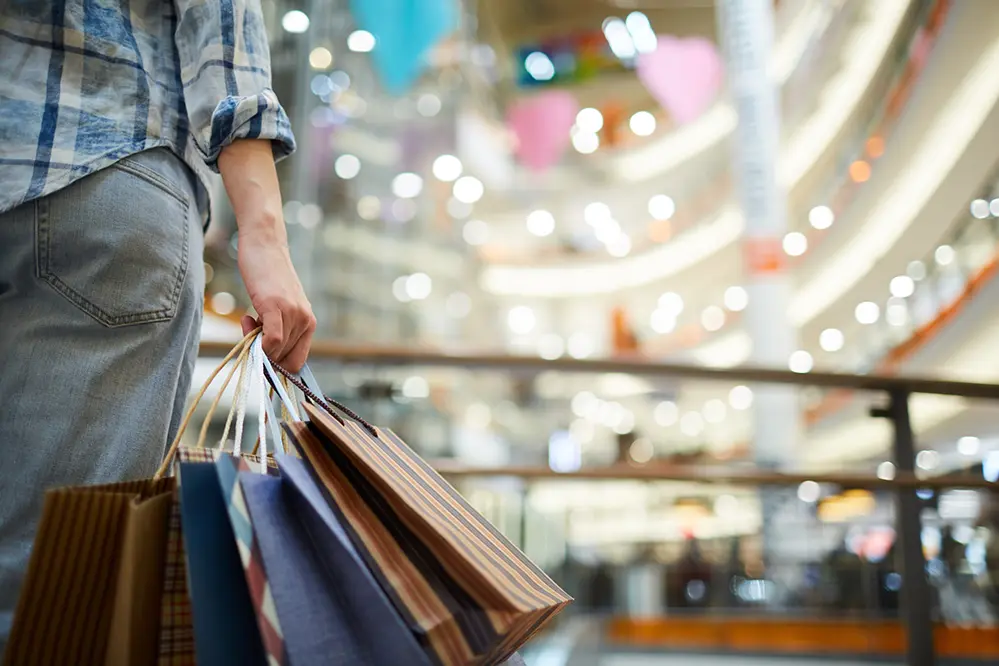
Lighting’s profound influence shapes shopping behaviors, a testament to neuroscience’s revelations, reveals that light. Retail spaces that skillfully deploy varied lighting arrangements, harnessing brighter environments in a strategic manner, create a vibrant aura that entices action, paving the way for heightened sales engagement.
Perceived Quality of Products
Lighting can dramatically alter perceptions, imbuing products with a sense of desirability and prestige. Skillful lighting can elevate an ordinary product to one perceived as superior and high-quality.
Consumers are drawn to environments that reflect a “premium feel”. Such spaces often benefit from lighting that highlights the excellence of goods, subtly encouraging affirmative purchasing decisions.
Bright, well-placed lighting can significantly boost a product’s perceived value, enhancing its appeal to discerning buyers.
Retailers who intelligently design their lighting strategies realize that the perceived quality of their products can be considerably enhanced, thus fostering increased consumer trust and engagement. This approach not only invites patrons to explore but encourages them to invest their resources with a newfound confidence. By prioritizing a strategic interplay of light and shadow, every visit becomes a vivid journey into quality and sophistication.
Duration of Stay in Stores
The atmosphere of a store, heavily influenced by lighting, plays a crucial role in determining how long a customer will remain engaged.
- Warm lighting creates a cozy and inviting ambiance that encourages customers to linger.
- Task lighting assists shoppers in clearly viewing products, contributing to longer browsing sessions.
- Accent lighting can draw attention to specific merchandise, enticing customers to explore further.
- Dynamic lighting adjustments can help keep the environment stimulating over extended visits.
When customers feel comfortable and engaged, their duration of stay often increases. The longer they stay, the more likely they are to make a purchase.
Ultimately, well-planned lighting fosters an inviting space, enhancing customer experience and maximizing potential sales opportunities.
Types of Retail Lighting and Their Effects
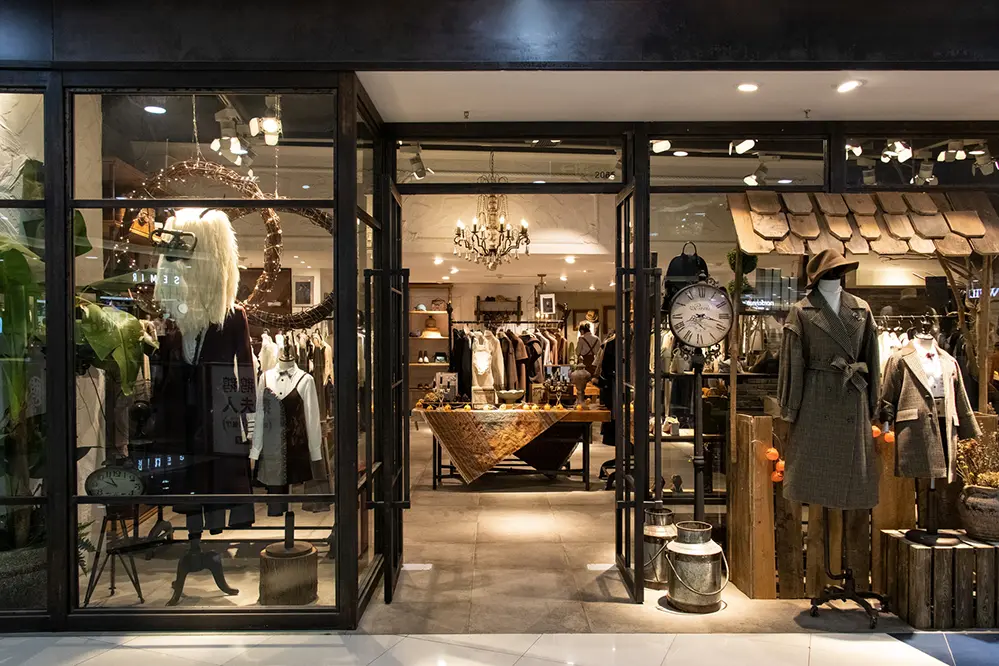
Retail lighting encompasses various types, each meticulously designed to influence customer perceptions and decisions. Ambient lighting sets the tone, task lighting enhances clarity, and accent lighting, in its sophistication, is no exception to how lighting affects consumer behavior and retail sales through the power of highlighting specific areas.
Tailoring these lighting styles enhances a store’s allure and strengthens customers’ emotional connections, consequently driving sales. Recognizing the unique impact each light type has is fundamental to optimizing retail environments.
Ambient Lighting for Mood Setting
Ambient lighting acts as the unsung hero of a store’s ambiance, gracefully setting the mood and influencing consumer behavior without overt display.
It creates a warm and inviting aura, welcoming customers with subtle elegance.
When ambient lighting harmoniously interacts with a store’s design, customers experience a sense of calm that fosters a conducive environment for thoughtful purchase decisions, lingering exploration, and heightened engagement.
The strategic application of ambient lighting can be the difference between a fleeting visit and a memorable shopping journey. By carefully crafting this illumination to evoke relaxation and comfort, retailers can forge lasting impressions, stimulating customer loyalty and encouraging repeat visits. Like a silent symphony, it “plays” on emotions, gently guiding the rhythm of consumer actions.
Task Lighting for Product Interaction
Task lighting is a powerful tool in encouraging customers to engage more deeply with products, directly influencing purchase decisions.
- Highlight Key Features: Well-placed lighting draws attention to critical product details consumers might otherwise overlook.
- Reduce Glare: Proper lighting minimizes distractions, allowing customers to focus solely on the product.
- Create Focal Points: Focused lighting directs customers’ eyes, enhancing product visibility and desirability.
- Enhance Experience: This lighting type fosters a more interactive and immersive shopping experience.
By illuminating products effectively, retailers can significantly enhance the tactile and visual appeal of merchandise.
Retailers who master task lighting empower customers with the clarity and insight needed to make informed purchase decisions.
The Importance of Color Temperature
Color temperature profoundly impacts the ambiance and perceived value of retail environments, influencing consumer emotions and actions.
Different hues foster specific emotional responses that subtly guide customer behavior.
For instance, warm tones like yellows and reds can create a feeling of comfort that encourages longer browsing, while cool tones like blues and whites might convey a sense of professionalism, cleanliness, and trustworthiness, pivotal in sectors like electronics and household goods.
Retailers leveraging color temperature can fine-tune the shopping environment to match branding objectives or seasonal themes, whether it means generating a cozy ambiance during winter or an invigorating freshness in summer. In doing so, retailers have an invaluable tool to “speak” to customers on a subconscious level, aligning visual elements with desired commercial outcomes.
Lighting Strategies to Boost Retail Sales
Strategically designed lighting schemes can transform retail environments and elevate customer experiences, which in turn enhances retail sales.
Effective lighting involves understanding how different lighting techniques can guide shopper behavior.
For example, accent lighting can highlight specific products and create a sense of urgency or desirability, while ambient lighting ensures a welcoming atmosphere throughout the store. Tailored lighting not only captures attention but also fosters a psychological connection between the consumer and the products.
A successful lighting strategy should consider every corner of the store, ensuring all areas are inviting and accessible. Adaptive lighting systems allow retailers to shift focus according to promotions or seasonal changes, thus maintaining dynamic store layouts. By incorporating technologies such as LED lighting and smart controls, retailers can transform “spaces” into experiences and allow their retail environments to resonate positively with consumers.
Practical Tips for Retail Lighting Design
Begin with strategic lighting placement.
High-quality illumination can direct and hold shoppers’ attention. The right lighting can draw the eye to specific products by emphasizing textures, colors, and details that might be overlooked otherwise. Additionally, consider the use of different lighting tones to compliment areas of the store with varying themes and ambiances.
Consider layering lighting types.
Swapping static lighting systems for adaptable solutions—such as color-changing LEDs—can seamlessly adjust the atmosphere to reflect ongoing promotions or events. This flexibility enhances the overall shopping experience.
Finally, leverage lighting to influence customer pathways and dwell time. Subtle changes in brightness or color can guide customers through the store, encouraging them to explore new areas or linger longer. Effective use of lighting therefore becomes not only a tool for showcasing products but also a powerful influence on customer journeys.
Case Studies: Successful Retail Lighting Implementations
Lighting has transformative power in retail.
Consider the iconic example of IKEA, which revolutionized how lighting can enhance product perception. Their stores are designed with lighting that mimics natural daylight to showcase items in a homely context. Similarly, Target’s revamping of their electronics section utilizes spotlights to create focus zones, emphasizing product innovation and stimulating customer interest.
These strategies highlight lighting’s critical role.
One standout innovation comes from a luxury brand – in an immersive flagship location, dynamic lighting installations adapt to the season – allowing customers to experience hand-picked selections with maximum allure.
Moreover, a grocery retailer in the Midwest explored customizable lighting grids, significantly boosting customer engagement by varying light intensities in fresh produce sections. Their initiative, completed in the early new year, demonstrated that thoughtfully integrated lighting can enhance sensory pleasure, deepening the shopping experience and driving sales growth.
Future Trends in Retail Lighting Technology
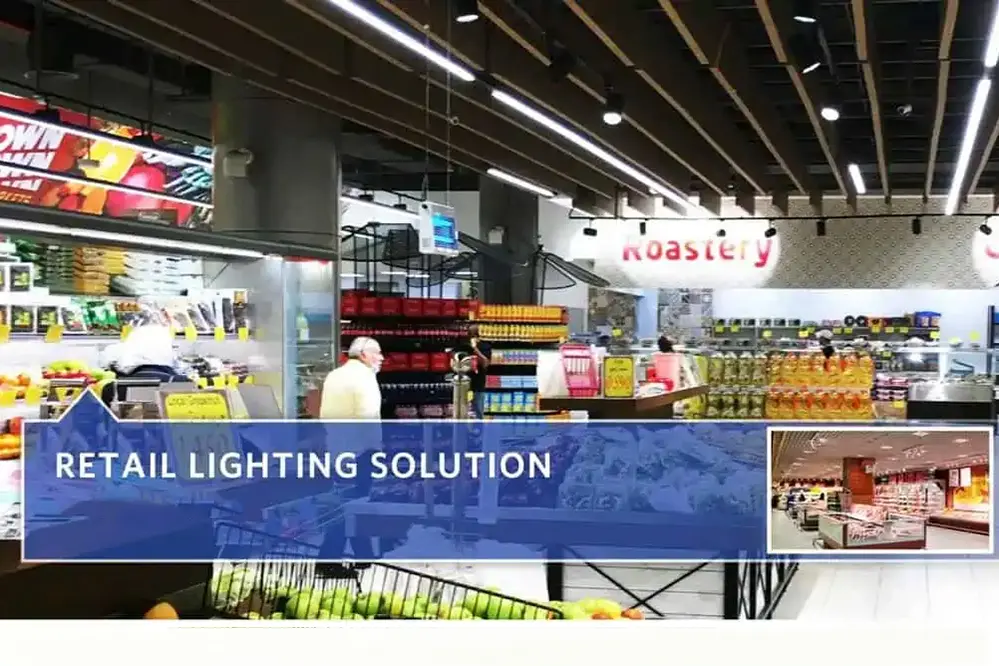
In the rapidly evolving landscape of retail lighting technology, groundbreaking advancements are steering us toward an era defined by innovation and sustainable growth. Lighting, once a passive element, now emerges as a dynamic instrument of immersive consumer engagement.
Smart lighting systems are at the forefront of these innovations. These systems adapt to various environmental factors, optimizing ambiance by sensing foot traffic patterns.
Fascinatingly, retailers are embracing IoT connectivity, facilitating adjustments in real-time to achieve optimal lighting conditions, creating more personalized shopping experiences.
Moreover, the integration of artificial intelligence in lighting solutions enables predictive analytics. Harnessing this data-driven approach, retailers tailor lighting to individual preferences.
These advancements promise a future where AI-driven lighting strategies transform retail environments, enhancing customer satisfaction and boosting sales figures. This technological leap reduces energy consumption, underscoring the commitment to sustainability.
Clearly, the future of retail lighting is not just about illumination; it’s about inspiration. By embracing these advanced technologies, retailers will revolutionize consumer engagement and redefine the shopping experience.
FAQs
How does lighting impact a retail space?
Lighting serves as the unsung hero in sculpting the atmosphere within retail spaces, intricately influencing consumer perceptions and purchasing behaviors. It subtly cultivates an environment that entices and engages customers.
Thoughtfully implemented illumination highlights specific merchandise, effectively directing consumer attention.
Strategically varied lighting levels can delineate different store zones, aiding in intuitive customer navigation.
Moreover, nuanced lighting changes can evoke distinctive moods, thereby aligning with store marketing strategies.
In addition, efficient lighting solutions harmonize energy usage with aesthetic appeal, promoting sustainability while enhancing shopper experience.
Ultimately, investing in smart lighting design not only elevates ambiance but also stimulates sales. Enhanced visual merchandising through lighting can profoundly impact consumer decisions, heralding a future of innovative retail experiences.
Can lighting influence product choices?
Illuminating the path to optimized consumer experiences, strategic lighting can significantly steer purchasing decisions. When we consider ambient factors, lighting emerges as a multifaceted tool enhancing the retail landscape.
Research consistently underscores the impact of lighting on consumer perception. With artful lighting, retailers can shape customer moods and drive engagement.
Specifically, warm lighting tends to evoke comfort and coziness, encouraging prolonged browsing. Conversely, bright, well-lit spaces can foster clarity, boosting consumer confidence in making quality decisions.
A meticulous blend of these lighting strategies can effectively highlight product details, attract attention, and convey value, which can substantially increase conversion rates and boost sales.
Furthermore, understanding the nuanced preferences of varied demographic groups regarding lighting can lead to more personalized shopping experiences, enhancing customer satisfaction. The possibilities are as varied as they are promising.
Innovative retailers focus on harnessing lighting’s power to craft inviting atmospheres, emphasizing the importance of visual cues. Thoughtful lighting design is not just an aesthetic consideration, but a strategic component of an outstanding retail strategy.
Why is lighting important in a retail store?
Lighting plays a pivotal role in shaping the in-store experience, influencing not only the ambiance but also the emotional responses of customers. It guides consumers through the space with ease, creating an inviting atmosphere that encourages discovery.
Bright, well-lit environments boost the feeling of safety and highlight product features.
Interestingly, distinct lighting choices can help in crafting specific moods that reinforce your brand identity and keep visitors engaged.
Warm lighting tends to evoke comfort and relaxation, making shoppers more inclined to spend time exploring. In contrast, cooler tones can induce a sense of urgency and efficiency, aligning with faster-paced shopping environments.
Research shows that well-designed lighting can significantly impact purchasing behavior, with the right illumination leading to enhanced product appeal, longer dwell times, and increased sales conversion.
Ultimately, a retail store’s lighting strategy is key to differentiating itself in the competitive marketplace. Thoughtfully curated lighting designs can enhance the shopping experience, making a lasting impression.
How does lighting attract customers?
The art of lighting transcends mere illumination, becoming a powerful allure that draws customers into a retail space. Its subtlety and sophistication can transform an ordinary store into an enchanting experience. In the vibrant world of retail, light serves as an invisible guide, gently directing consumers through a carefully crafted journey of discovery and delight.
The strategic use of lighting not only highlights products but also evokes specific emotions that influence purchasing decisions. Warm lighting can create a welcoming atmosphere, prompting customers to linger, while dynamic lights might convey excitement and urgency. Each choice in lighting can effectively set the mood, inviting consumers to explore and engage with the brand.
Meticulously planned lighting pathways ensure that customers instinctively flow through the space, subconsciously attracted to focal points that showcase the store’s most innovative products. Brands that master such environments transform casual visits into memorable explorations, thereby enhancing consumer satisfaction and encouraging repeat business.
Furthermore, in an age where consumers are visually inclined, lighting plays a crucial role in enhancing the aesthetics of a display, making it Instagram-worthy. By tapping into the psychological impact of well-lit environments, retailers can not only increase foot traffic but also elevate their brand identity.
In essence, lighting is more than decorative; it’s a strategic element that enriches the shopping experience. It captures curiosity, fosters deeper connections, and ultimately, fuels increased sales.
How does lighting impact shopping moods?
Brilliantly orchestrated lighting schemes subtly influence emotions, generate excitement, and deliver an immersive shopping experience, gradually transforming a store visit into an enjoyable adventure. Luxurious, a warm embrace of welcoming ambiance enhances the desirability of products on display.
Research demonstrates lighting’s power to shape perceptions and create a compelling atmosphere. Strategic illumination has the capacity to guide consumer focus, subtly nudging them towards particular products.
Bright, stimulating spots invite curiosity and exploration, drawing attention to featured collections and promotions (inspirational, instrumental brilliance enhancing engagement) and enriching the retail experience.
Shadows artfully highlight distinctions, creating a dynamic environment. The interplay of light and darkness encourages exploration, and provokes emotional connections, supporting delightful retail journeys.
Sophisticated lighting also fosters a pleasant retail climate, promoting relaxed, unhurried browsing which ultimately tends to lead to increased spending. It engenders a sense of comfort and trust—a cornerstone of favorable shopper perception.
Ultimately, the art of light manipulation in retail is not merely aesthetic. Perfectly balanced lighting solutions exist that motivate and captivate customers, enhancing sales trajectories, and converting curious browsers into committed buyers.
Conclusion
Understanding the impact of lighting on consumer behavior and retail sales is essential for modern retailers. Strategic illumination can transform retail spaces into inviting and engaging environments, leading to increased customer satisfaction and amplified sales. This highlights the power of lighting in crafting memorable shopping experiences and forging lasting customer relationships.
Effectively implemented lighting strategies have the potential to significantly enhance consumer interaction and improve sales performance. Retailers who embrace these strategies are likely to see remarkable gains, as lighting plays a crucial role in shaping consumer perception and buying decisions. By focusing on dynamic, customer-centered lighting solutions, businesses can create environments that resonate emotionally with consumers.
As technology continues to evolve, prioritizing innovative lighting solutions offers retailers a competitive edge. By fully understanding and leveraging these advances, businesses can illuminate a path to sustained success and customer loyalty. Embracing the power of lighting not only enhances the shopping experience but also fosters long-term relationships with customers, ensuring continued growth and success in the retail landscape.
